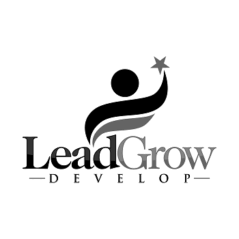Photo from Pexels
Every successful business begins with a spark, but expansion requires more than inspiration. It takes deliberate systems, strategic shifts, and consistent forward movement to transform a solid foundation into a thriving business. Sales don’t grow on charm alone; they grow best when structure and opportunity meet, and your team works smarter, not harder. Your outcomes are directly affected by how well you streamline every part of your sales approach, whether you’re scaling for growth or improving daily performance. When you eliminate guesswork and replace it with strategy, you create momentum that drives long-term growth.
Elevating Lead Quality Through Better Targeting and Refined Messaging
A larger audience does not always yield better results. Getting the correct message to the right individuals is the key to increasing sales. When your marketing goals are overly broad, your sales force ends up going after leads that don’t turn into sales. To be more efficient, you need to sharpen your focus by figuring out which client groups respond best and tailoring your messaging to their specific problems and goals. This clarity leads to more meaningful conversations, cuts down on the time spent on unqualified leads, and raises conversion rates without adding to the workload. For example, a sign company Colorado Springs can improve lead quality by targeting local businesses in need of storefront signage rather than casting a wide net across unrelated industries. Better targeting makes every effort more focused and makes sure that your sales process starts with a strong, relevant base instead of scattered outreach.
Building Repeatable Sales Systems That Minimize Guesswork and Maximize Control
When your team adheres to a methodical, repeatable process, sales results significantly improve. When teams scale, random selling wastes time and introduces inconsistencies. Your organization can measure, improve, and repeat successful behaviors by creating a clear structure that guides reps from lead qualifying to closure. These systems make things more predictable, which helps you figure out what works and what doesn’t. Your sales process becomes a live engine when you use standardized scripts, automated workflows, and CRM connections. This takes the guesswork out of the process and gives your team more time to close deals and less time to figure out what to do next. Your system’s ability to replicate success across various touchpoints will increase with its level of discipline.
Leveraging Integrated Technology to Align Sales, Marketing, and Operations
When tools and departments don’t work together, it causes problems that limit growth. Using unified platforms to connect sales with marketing and operations creates a smooth flow of data and activity. Teams can effectively collaborate and stay informed about every customer interaction when information is shared in real-time. Messaging stays timely and consistent when marketing initiatives are monitored using the same system that sales use for follow-up. Operations also benefit since they make sure that product delivery and customer assistance are in line with what was promised during the sales cycle. Many developing businesses deal with professionals who specialize in salesforce consulting to create this kind of coherence. These professionals set up systems that connect workflows, automate tasks, and provide full pipeline visibility. This unified structure cuts down on expensive miscommunication and supports scalable growth.
Improving Sales Team Performance Through Real-Time Insights and Metrics
Driving sales requires more than just energy; it also requires insight. You can make sensible, educated changes by keeping track of important performance metrics like win rates, average transaction size, sales cycle duration, and lead response time. Sales representatives benefit from quick feedback, which enables them to identify the most effective tactics. By gaining insight into pipeline health and representative efficacy, managers are able to provide targeted coaching and support. Data eliminates the need for guesswork and allows for continuous improvement across the board. Your staff will stay engaged and motivated if they know what success looks like and how to quantify it. Real-time analytics also give you early warning indications, which lets you fix problems before they affect the outcomes.
Prioritizing Customer Retention as a Primary Growth Strategy
Growth is more than just acquiring new customers; it is also about retaining those you already have. Loyal consumers become brand ambassadors in addition to making repeat purchases. A good business strategy puts a lot of emphasis on post-sale engagement, which makes sure that consumers feel supported and appreciated after the sale is over. This method turns one-time purchases into long-term relationships. Additionally, high retention rates ease the strain on sales and marketing to replace lost revenue continuously. Building trust and pleasure comes from giving constant value, maintaining open communication, and being proactive in your assistance. The more you focus on retaining customers, the more stable your growth will be. This will lead to steady income and a better brand reputation.
Conclusion
To streamline sales growth, you need to build a system where momentum never depends on luck or guesswork. When targeting gets sharper, processes get tighter, departments get on the same page, and teams work with more clarity, growth becomes a natural outcome instead of a daily struggle. The most successful businesses don’t merely look for new customers; they build a strong infrastructure that allows sales to scale with confidence and purpose. With every system working together and every decision based on insight, your company will be able to grow faster, operate more efficiently, and serve better.

